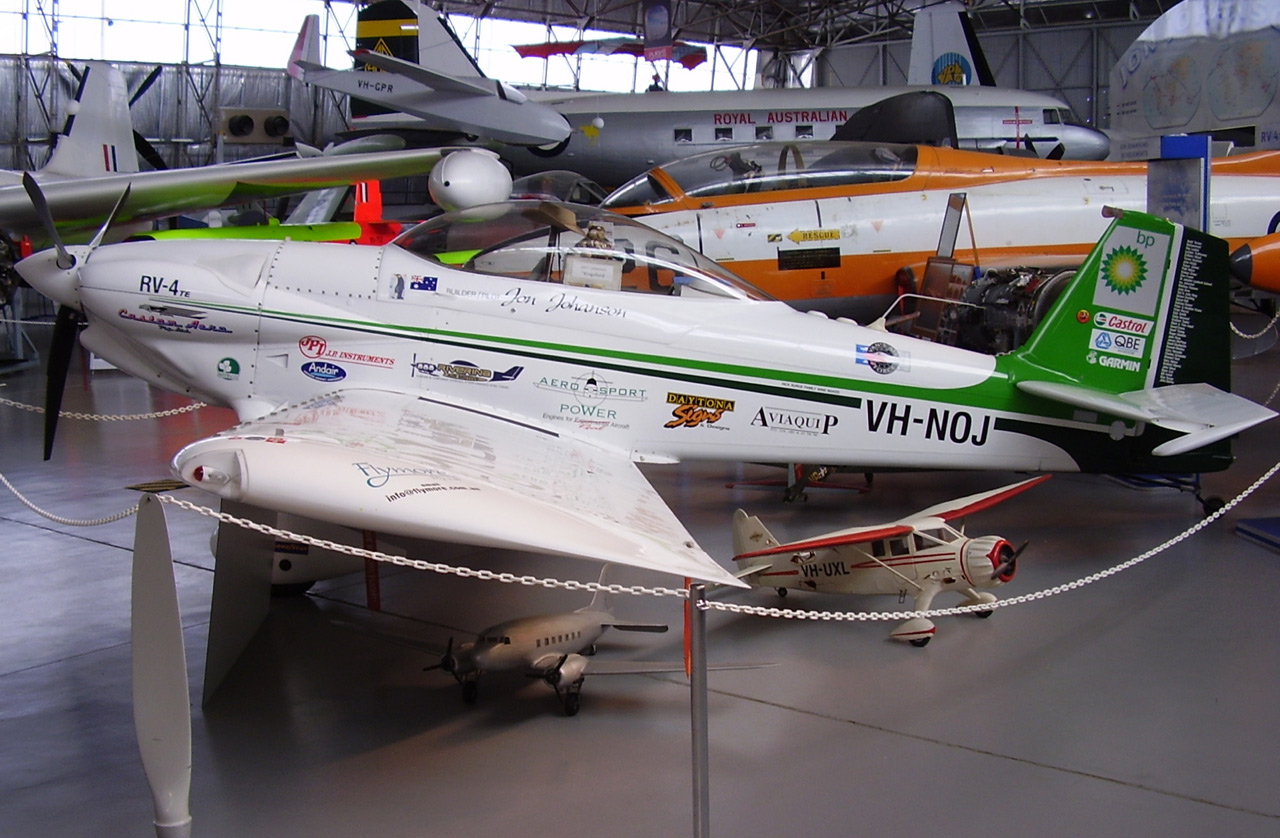MUSEUM
South Australian Aviation Museum
DESCRIPTION
VAN’S RV-4
Registration No. VH-NOJ
Single engine two-seat light sport aircraft (homebuilt)
Technical Specifications:
Engine: Lycoming 0-320 160hp
Maximum take-off weight: 680kg
Length: 6.2m
Height: 1.65m
Wingspan: 7.2m
Cruising speed: 157 knots (290km/h)
Range: > 8,550 km (4,750nm)
Capacity: 2 pilots, or 1 pilot and a long-range fuel tank installed in the rear cockpit
Photo courtesy of Mike Didsbury
HISTORY – (PROVENANCE)
In 1989 Jon Johanson was working as a charter pilot and became interested in building his own aircraft. After investigation, he decided to build a Van’s RV-4. Jon said, ‘This thing was just the ticket – rugged, simple, went fast, went slow, and could handle bush strips. But I didn’t know anything about metal or how to build with it, and I didn’t want to get into something I couldn’t handle, so I didn’t do anything for a time.’
The building process was slow, but was completed in 2,000 hours. Jon’s first world trip was in 1995. He left Parafield, Adelaide, on 26 June for the USA. After a stay of a few days, he headed across the Atlantic Ocean for Europe, the Middle East and Asia, and then back to Parafield, where he arrived on 4 September. The total flight time was 198 hours, the distance 48,800 kilometres, and the average ground speed was 133 knots (246 km/h).
Jon made two further world trips in 1996 and 2000, breaking more flying records.
On 6 December 2003 Jon left Parafield for New Zealand, and then the following day for Argentina via the South Pole.
He diverted to McMurdo after crossing the South Pole, landing 26.5 hours after leaving New Zealand and becoming the first person to fly a fixed-wing single engine aircraft over the Pole. (The second person ever to fly solo over the South Pole.)
In 2005, Jon was honoured as a ‘High Flyer’ by the Federation Aeronautique Internationale (FAI) in Paris. He received the world’s highest aviation award (the 2004 Gold Medal) in recognition of his outstanding contribution to the development of aeronautics in sport aviation.
The RV-4 was retired and transported to the Museum for permanent display in September 2009.



